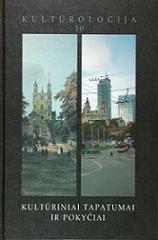Japonų Šintoizmas Ir Baltų Religijos
Japanese Shinto And Baltic Religions
Author(s): Gintaras BeresnevičiusSubject(s): Anthropology
Published by: Lietuvos kultūros tyrimų
Keywords: Baltic Religion; Shinto; comparative studies; rituals; mythology;
Summary/Abstract: The Japanese Shinto religion and the Lithuanian ethnic religion are separated by the entire Eurasian landmass, still they share many image patterns and rituals, what can hardly be explained by the common Eurasian descent and universal archetypes. Corresponding phenomena found in Shinto and in the Lithuanian religion are countless. First of all, it is the similar understanding of kami, a spirit having attributes of a divine being and able to take the shape of a thing, a natural body or a phenomenon and materialize in human functions. Both in Shinto and the Baltic religion, temples are small wooden architectural constructions placed in groves. As evidenced by Lithuanian ethnographic texts and Japanese customs, many similarities exist between the fertility rituals and mythology related to Midsummer Eve, which is among the major festivals of the Latvians and the Lithuanians. These customs are maintained up to the present day in the opposite parts of Eurasia. Midsummer Eve is a day when a deity, or kami, steps down from the sky over a mountain and descends to earth. Moreover, both the Japanese and the Lithuanians built numerous mounds (kurgans) used for religious or military purposes and held similar beliefs in relation to them. To avoid surrendering alive, Lithuanian dukes committed hara-kiri and, as can be assumed, practiced something similar to busido. The possibility that these similarities exist owing to universal archetypes cannot be rejected, still most probably there was somebody, e.g. the Huns or tribes related to them, or, possibly, the Indo-European peoples, who adopted the Eurasian shamanistic heritage somewhere in the Eurasian steppes and transformed it to the level of Shinto.
Journal: Kultūrologija
- Issue Year: 2003
- Issue No: 10
- Page Range: 364-379
- Page Count: 16
- Language: Lithuanian

